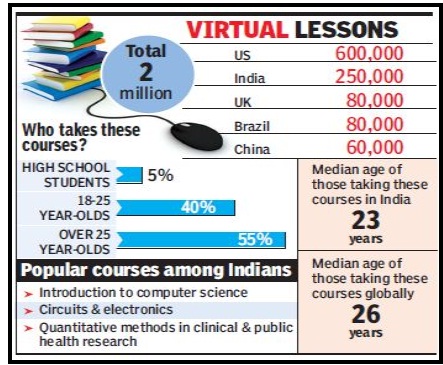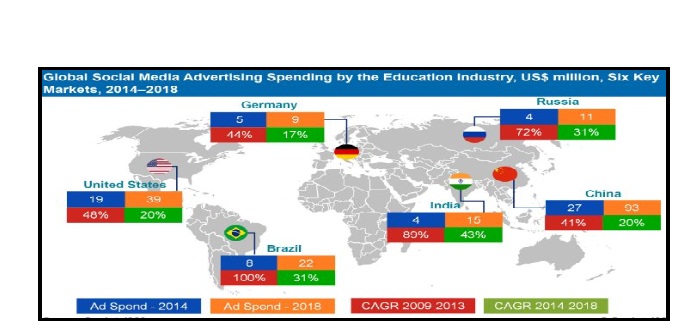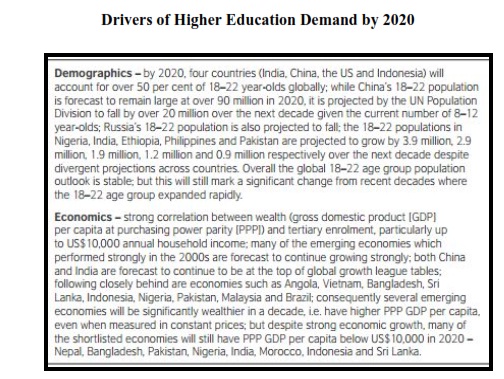Education standards are rising globally. Increased prioritization of primary and secondary
education and literacy by governments, especially in emerging regions, is translating into
a boom in uptake of tertiary education in many markets: the number of higher education
students globally rose from 163 million in 2008 to 199 million in 2013, with more female
than male students. In the long term, this is good news for consumer goods companies
and retailers. The trend is increasing the skills of the world’s population, reducing skills
shortages, increasing productivity and also raising incomes and living standards.
Rising uptake of higher education globally
Most regions and countries globally are seeing a boom in their uptake of higher
education. The number of higher education students globally rose from 163 million in
2008 to 199 million in 2013. The reason for this is a strong growth in the number of
primary and secondary education pupils and focus by emerging market governments on
making education compulsory by law, as well as implementing literacy campaigns, which
is translating into growth in tertiary education student numbers in most regions.

More female higher education students than male
The number of female higher education students is higher than the male equivalent in
2013, at 98.6 million compared to 95.1 million. Despite this, men still significantly
outnumber women in employment rates in nearly every country globally in 2013, and the
difference is even more acute among senior managerial jobs. This highlights that
governments and companies alike should do more to nurture and retain the pool of female
talent that is being lost during employment.

Dominance of arts subjects over sciences
Despite growing demand for science and engineering students globally, meaning that
most countries experience skills shortages and brain drain in these subjects, the number
of arts and non-sciences students continues to grow. The most popular subjects are Social
Sciences, Business and Law, with these comprising a combined 33.4% of the total
number of graduates in 2013 in developed markets, compared to 8.7% in science and
11.8% in Engineering Manufacturing and Construction. One way to attract more students
to these subjects could be to sponsor talented students to study these subjects, on
condition of employment on completion of higher education. Virtual Lessons is a new
rage worldwide providing easy access to all courses the students wants to learn about.

Boom in private higher education
As demand for higher education grows, it is frequently the case that demand is beginning
to outstrip supply, especially in emerging markets where the growth in students has
accelerated rapidly. One key market where this trend is particularly evident is India,
where public education providers are struggling to keep pace with the number of
would-be students. The University of Mumbai in 2011 received 37,000 applications for
800 places for junior college level. In order to meet demand, there has been a rise in the
number of private higher education institutions stepping in to provide higher education
courses. In order to help the problem, its government passed the Foreign Educational
Institutions (Regulation of Entry and Operations) Bill in 2010 to permit more foreign
universities to set up teaching institutions in India.

Rise in spending on higher education
Coupled with both the rise in uptake and the boom in private education, it is perhaps not
surprising that spending on higher education is rising steeply in many markets. Indonesia
had the biggest increase globally from 2008-2013 in its expenditure per student in
purchasing power parity (ppp) terms, rising by an annual average of 12.7%. The second
third and fourth countries globally were Argentina, Guatemala and Brazil, driven by both
government and consumer spending on education. Spending on higher education for
publicity purpose has also increased.


for more information visit global service sector